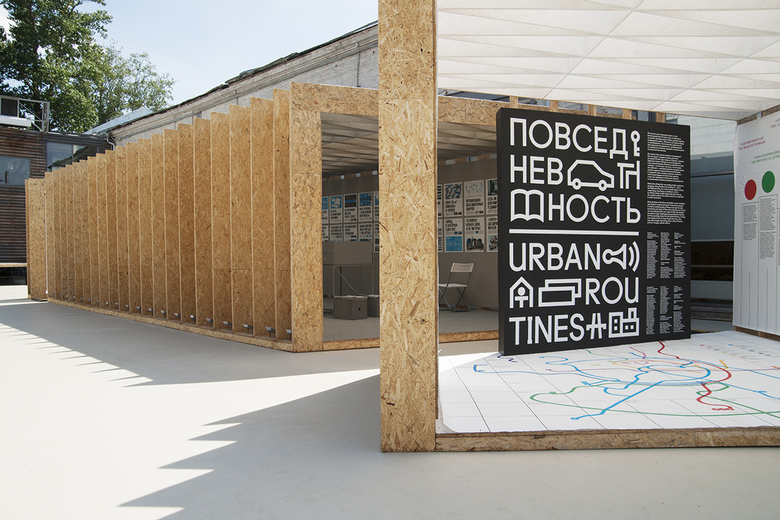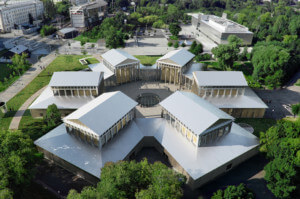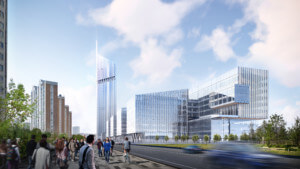Admired by Le Corbusier, Moshe Safdie and Denys Lasdun, The Narkomfin building has stood for 86 years. Completed in 1930, the building was designed by Moisei Ginzburg and Ignaty Milinis of the Organization of Contemporary Architects Group (OSA). The block of 45 flats sits on Novinsky Boulevard in central Moscow and is revered by many as a leading precedent for Constructivist architecture. However, despite its listing on the Russian cultural heritage register, the future of the now vacant and decaying structure hangs in the balance.
Though only being active for five years while practicing as an architectural association in the former Soviet Union, OSA is considered to be the first Constructivist architecture studio. The Narkomfin provided Ginzburg with the opportunity to test theories on interior layout, form, and communal living. Using reinforced concrete, the building originally comprised a series of apartments elevated on pilotis that were joined to a shared amenity space. It was built for high-ranking employees at the Commissariat of Finance—one of the USSR’s most important government offices—and tenants occupied two-story condos, sharing kitchens, washing space, and a kindergarten. Bedrooms face east, allowing the morning sunlight to enter while living spaces face west to make use of the evening light.
These luxuries, based on Constructivist theory, were ridiculed by Stalin as bourgeois in 1929, and after trading multiple, negligent owners in the years that followed, the building has severely deteriorated. According to The Moscow Times, past owners had attempted to make a re-development of the building profitable, though the hindrance of poor materials proved a hurdle too many. “There is no easy way to transform Narkomfin into the luxurious apartments beloved by Moscow developers,” writes Howard Amos. “After all, who needs tiny apartments with no kitchen?”
Moisei Ginzburg’s family, however, is committed to ensuring the building’s preservation. His son Vladimir contributed efforts toward research and preservation and Moisei’s grandson, Alexei, has continued those efforts. According to him, there is enough information on the building available to replicate its form as well as its hallmark coloring (apartment doors are painted black and white in an alternating style).
The Narkomfin building is now under the ownership of the company Liga Prava, who won an auction for the building. Director of Liga Prava, Garegin Barsumyan said: “Nothing will change from what was conceived in the original architectural plans,” adding that it will be turned into “business class accommodation.” (What would Ginzburg and Milinis think?) The Moscow Times reports that those plans include demolishing the ground floor and exposing the pilotis (per the original design) as well converting part of the shared amenity space into a cafe.
Back in June, Deputy Moscow Mayor Marat Khrusnullin said, “I personally believe these buildings should be left as monuments of how not to build.” The building’s architectural significance was also acknowledged by Marina Khrustaleva, an expert on Constructivism and member of the Moscow-based architectural preservation organization Arkhnadzor. “There can’t be anyone else apart from Ginzburg in this project,” she said. Khrustaleva knows The Narkomfin well having traced its past during her career. “All foreign architects ask to go and see Narkomfin,” she added. “Their education begins with descriptions of this building in their textbooks. It is of fundamental significance for the architecture of the 20th century.”










